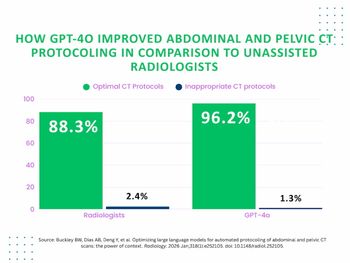
MRI-Determined Brain Volume Can Predict PTSD
These measurements can be used to predict at three months which patients will develop post-traumatic stress disorder after traumatic brain injury.
Brain biomarkers, visible with MRI in people who have traumatic brain injury (TBI), can potentially help identify patients who will develop post-traumatic stress disorder (PTSD), paving the way for more effective treatments and better outcomes.
The link between PTSD and TBI has garnered significant attention, but healthcare providers still do not fully understand how the symptoms and cognitive problems associated with PTSD develop. In an article published recently in
Using data culled from TRACK-TBI, a large, longitudinal study of patients who present to the emergency department with TBIs severe enough to warrant a CT scan, a team led by Murray Stein, M.D., MPH, FRCPC, distinguished professor of psychiatry, family medicine, and public health at UCSD, assessed evidence of PTSD over time.
For more coverage based on industry expert insights and research, subscribe to the Diagnostic Imaging e-Newsletter
The results of their work, said Cameron Carter, M.D., Biological Psychiatry: Cognitive Neuroscience and Neuroimaging editor, effectively moves the understanding of these conditions forward.
“This very important study uses magnetic resonance imaging to take the field a step closer to understanding why some people develop PTSD after trauma and others do not,” Carter said. “It also lays the groundwork for future research aimed at using brain imaging to help predict that a person is at increased risk and may benefit from targeted interventions to reduce the clinical impact of a traumatic event.”
To make their determinations, Stein’s team followed 421 TBI patients and evaluated them for signs of PTSD at both three and six months post-injury. Using 3D T1-weighted 3T MRI, they performed volumetric analysis on several brain regions, including the insula, hippocampus, amygdala, superior frontal cortex, rostral, and caudal anterior cingulate, and lateral and medial orbitofrontal cortex.
“MRI studies conducted within two weeks of injury were used to measure volumes of key structures in the brain thought to be involved in PTSD,” said Stein, the study’s lead author. “We found that the volume of several of these structures were predictive of PTSD three months post-injury.”
Based on these images and measurements, his team determined that at three months, 77 patients – 18 percent – likely had PTSD while 70 patients – 16 percent – did at six months. In particular, they found that smaller volumes seen on imaging in the cingulate cortex, superior frontal cortex, and the insula were associated with PTSD at three months. However, they were unable to make the same predictions with imaging at the six-month mark even though PTSD symptoms continued.
These findings, Stein said, echo existing research and underscore the belief that reduced cortical volume could be a risk factor for PTSD development. The point to the protective effect of having a higher cortical volume – or a “brain reserve” – against PTSD development.
Even still, the team acknowledged, their findings are not robust enough to make a clinical impact.
“Whereas the incremental effect size of inclusion of these volumetric measures was small and unlikely to be of clinical significance in their current form,” Stein said, “results provide proof-of-principle for how prediction of at-risk individuals might be accomplished to enhance prognostic accuracy and to enrich clinical prevention trials for individuals at highest risk for PTSD following mild TBI.”
Newsletter
Stay at the forefront of radiology with the Diagnostic Imaging newsletter, delivering the latest news, clinical insights, and imaging advancements for today’s radiologists.




























